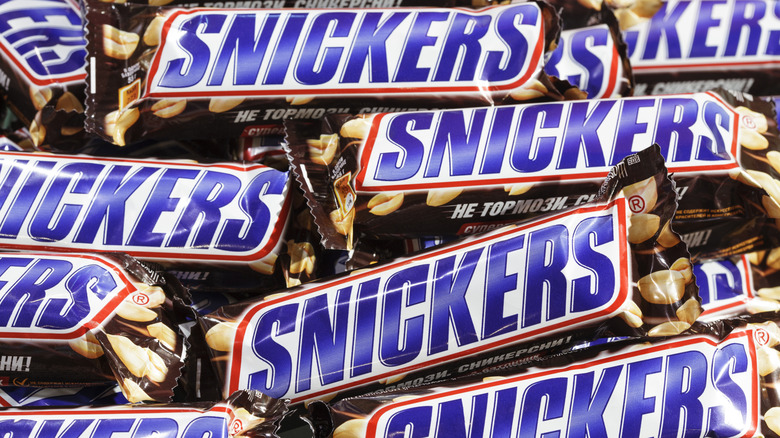Snickers is known around the globe as a sweet, substantial candy bar. It’s packed with peanuts, caramel, and nougat, all enrobed in tempered chocolate. It was introduced by Mars in 1930, and the company has been refining the recipe ever since. Today, it is the world’s best-selling candy bar with annual sales of over $380 million globally and 400 million units sold each year in the United States alone.
In order to understand Snickers’ success, we have to break down the composition of the candy bar, as well as assess its marketing tactics over the years. The chocolate has a variety of textures, giving consumers a complex bite. It contains airy nougat (popular in many candies), contrasted with chewy caramel, which already gives your jaws a workout, and then a number of crunchy peanuts to top it off. The chocolate casing obviously adds to the flavor profile, but it’s the interior that steals the show. With all of these elements together, Snickers makes for a surprisingly filling confectionery, especially in comparison to other candies. When it hit the shelves, it started retailing at the industry-standard five cents, but it shot up to 20 cents a bar not long after. Evidently, the company knew that this was more than your average treat, and its higher price point reflected its nuanced engineering.
Arguably one of the most famous food marketing campaigns is Snickers’ “You’re Not You When You’re Hungry”. Launched in 2010, the commercials usually saw celebrities engaging in unflattering behavior until they ate a Snickers bar and reverted to their true selves. The campaign saw a 15.9% increase in sales in just the first year, and it spread internationally, featuring local celebs from around the world.
The story behind Snickers
The iconic chocolate bar is rumored to be named after the Mars family’s horse, who was much beloved and passed away shortly before the bar was developed. Snickers presented a divergence from the existing chocolate market, and well into the rise of the candy bar in the wake of World War I. The recipe was constantly tweaked and refined, notably adding peanut butter nougat in 1960. By the late 1990s, Mars had increased the number of peanuts in each bar, and today, it’s recorded at about 16 peanuts per bar, making up 24% of each serving.
Despite its popularity, Snickers has still fallen victim to fluctuating markets. In 2009, the U.K. bars reduced their sizes while maintaining the same cost, and did so again in 2013. Australia also saw two rounds of this affecting their Snickers. The phenomenon is called “shrinkflation,” and it’s been affecting your soda can sizes, too, if you’ve been wondering why you’ve been getting less bang for your buck. Still, the people know what they want, and they remain satisfied that the candy bar maintains its hearty nature, even in a smaller volume.






